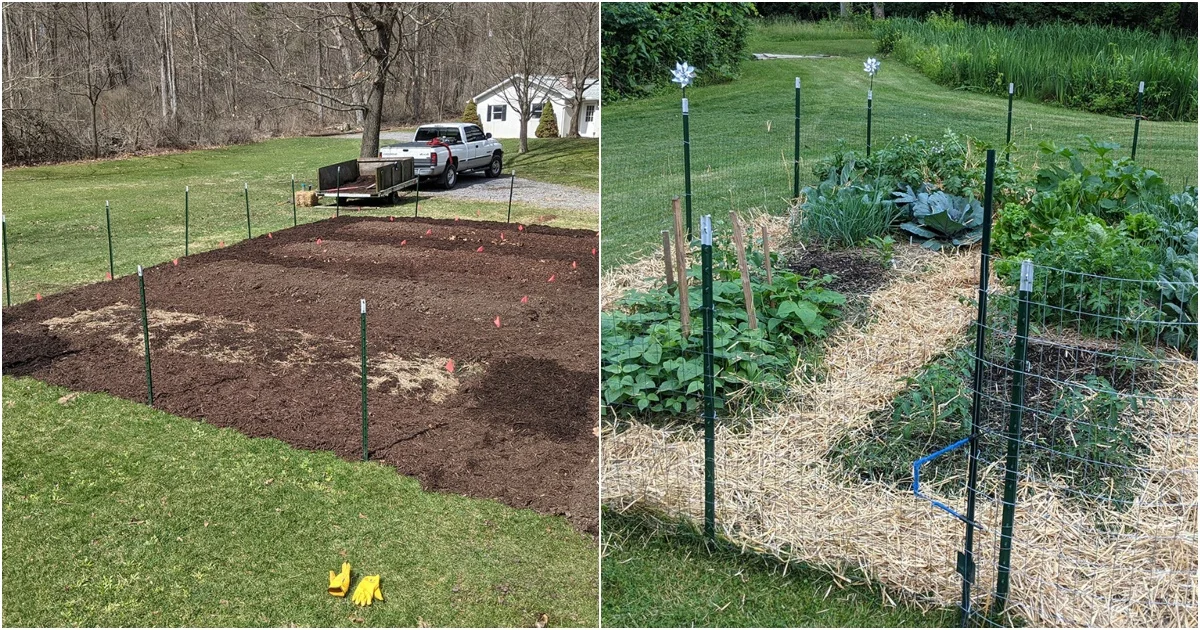
So, you’ve finally taken some gardening advice from Rural Sprout and are putting that spade or rototiller down for a nap. Now what?
Your questioning and calculating mind may be wondering, when do I plant seeds, and how do I plant them? In the mulch, on top of the soil, in the soil, where? What about watering? And why are weeds still coming up?
Let me state here and now that the first season of no-dig gardening will probably be the hardest. It’s not just the physical challenges you’ll have to face when starting a garden, it’s the mindset.
Though no-dig gardens are becoming more popular, they still encounter resistance among society simply because people haven’t seen enough examples of them in action.
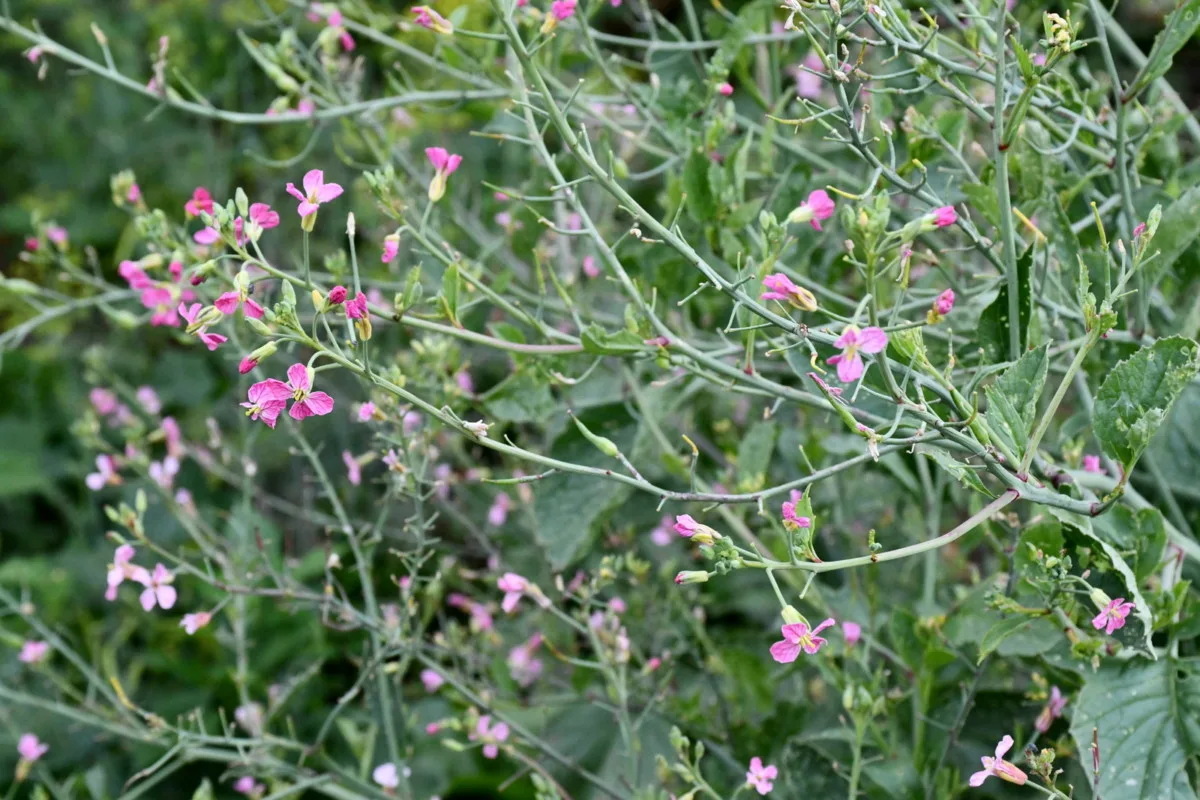
By the end of this article, you’ll be well on your way to knowing all you need to read about starting a no-dig garden and the tips and tricks to make it work in your favor. Then, all that’s left to do is put those new skills into practice.
Does a no-dig garden actually produce enough to eat from?
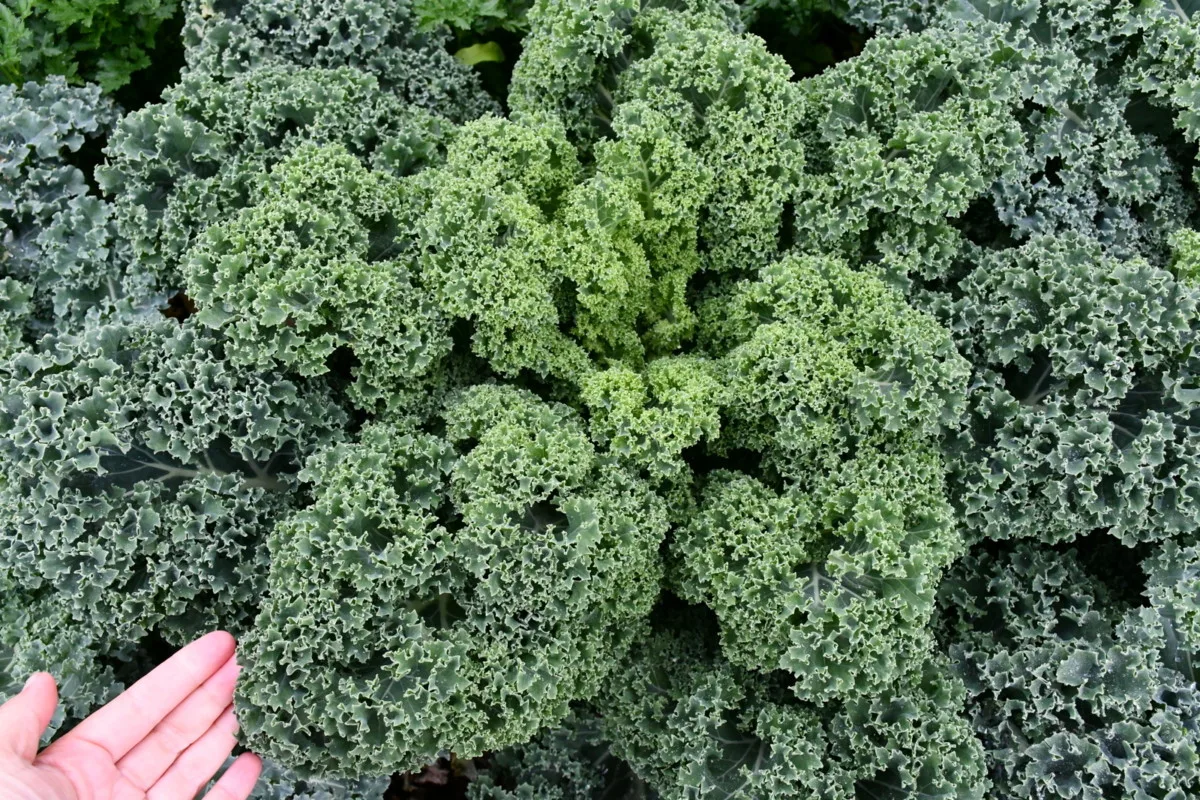
It certainly does, and much more. At least that’s been our experience of not digging the soil for 11 years.
I’m not saying that a spade never set its blade in the garden; after all, it’s nearly impossible to dig horseradish up with your hands. Depending on how you plant potatoes, you may need to wake up that spade after all, at least when harvesting time comes around. Unless you’ve planted your spuds in mulch too.
The good news is that no-dig gardens are perfect for people with smaller gardens, though I’ve seen it work on a larger scale too. Your level of success comes with time, experience, a little bit of luck and a lot of mulch.
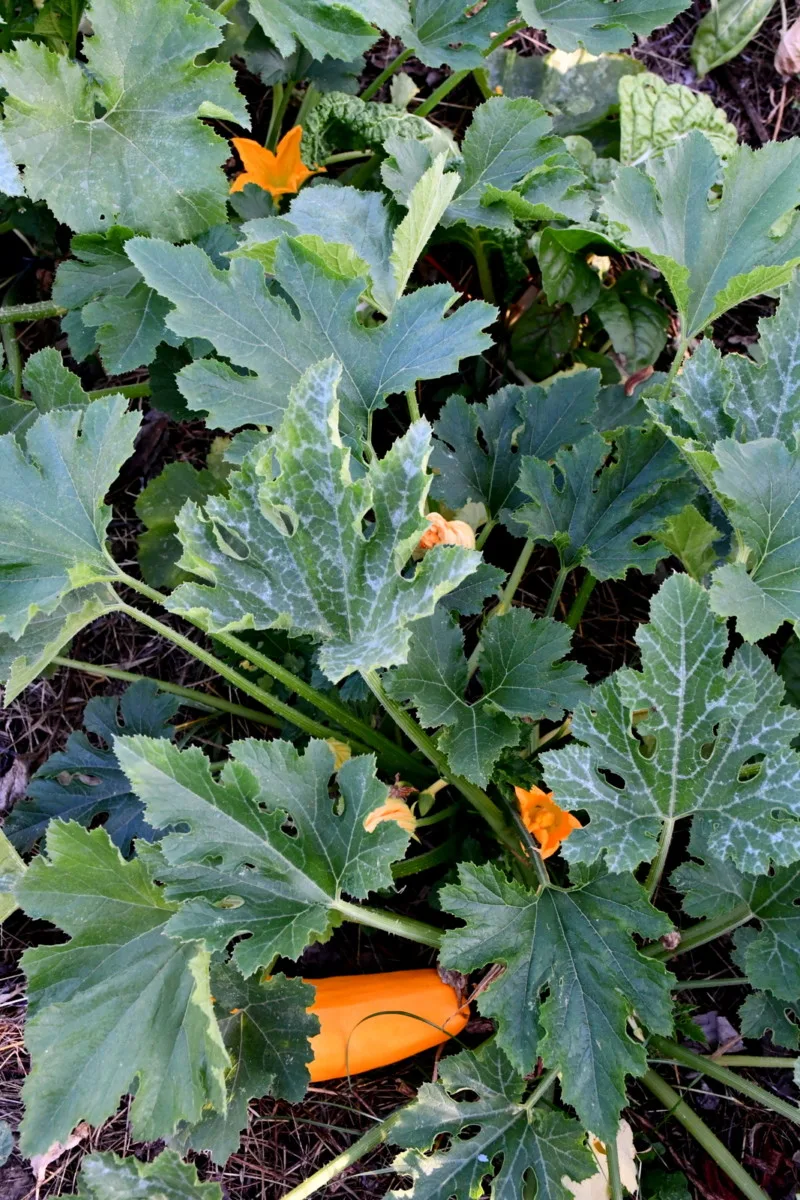
If you don’t readily have access to some sort of mulch, or it is too expensive where you live, then perhaps a no-dig garden isn’t for you. At least not now. Maybe it’s raised beds or a container garden that you need first. Don’t worry, you can always transition later. Starting a no-dig garden from the ground up is super easy.
Before we get into what you need to know, let’s briefly state the why. Then all the pieces will begin to fall into place.
Benefits of No-Dig Gardening
Any wise person would ask why they should put down their shovel and stop digging.
Here’s why you should stop digging in your garden at any time of the year:
1. Soil compaction – constant plowing or turning the soil year after year encourages the dirt to become more compacted each season. Over time it also leads to erosion.
2. Weeds – the soil always wants to be covered – the truth is that “weeds” grow faster than most garden crops. One way to keep them at bay is by covering the ground with mulch and letting some edible weeds grow.
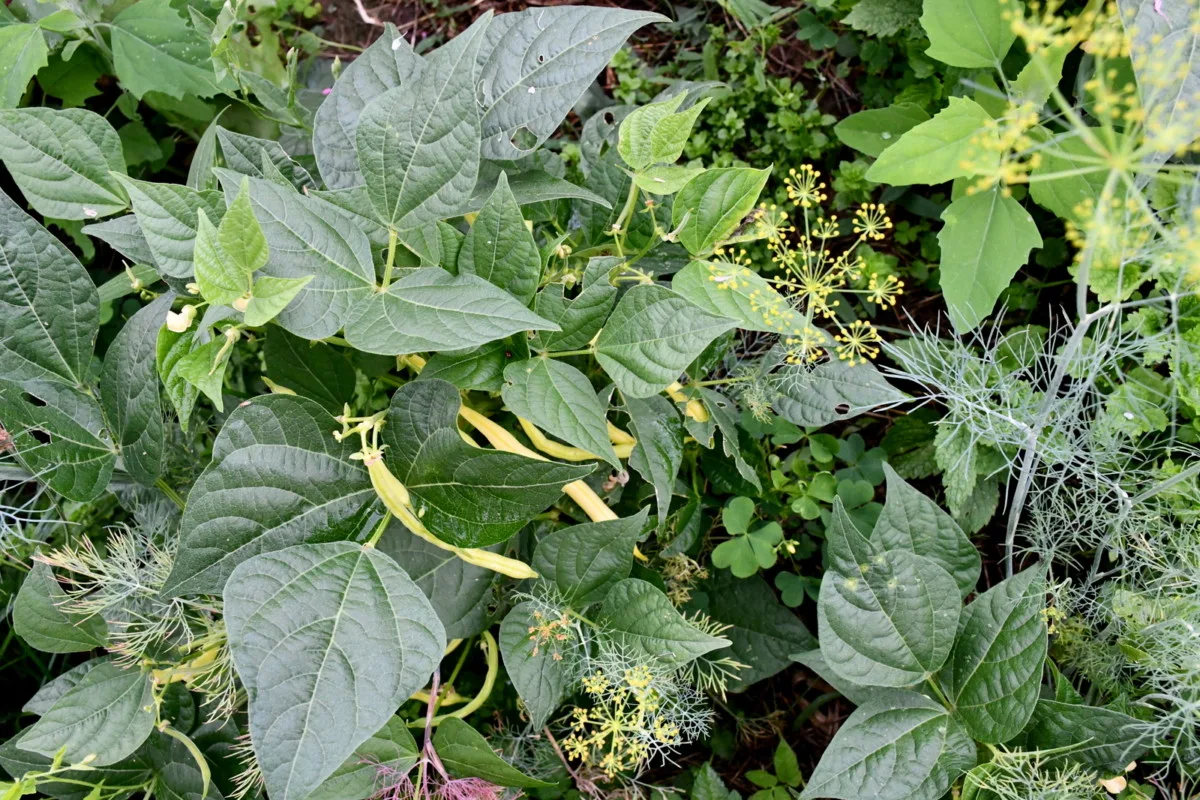
3. Attract earthworms and other ground-dwelling creatures – bottom line: you need more earthworms in your soil. Once you stop digging, more earthworms are bound to dig in and increase the amount of air and water that gets deep into the soil. It’s time to practice gratitude, for they do a lot of the gardening for you.
4. Increase water retention – if you find the weather to be unstable, what will the next decade bring? One way to prepare for the future is to stop digging now and let your soil rest with a blanket of organic matter on top. This gives your garden superpowers in soaking up and retaining moisture, no matter how you water/irrigate your garden.
5. Higher yields – as the mulch you lay down is constantly in a state of decomposition, the soil and the growing plants are always receiving a slow dose of necessary nutrients. This, in turn, leads to healthier plants and higher yields.
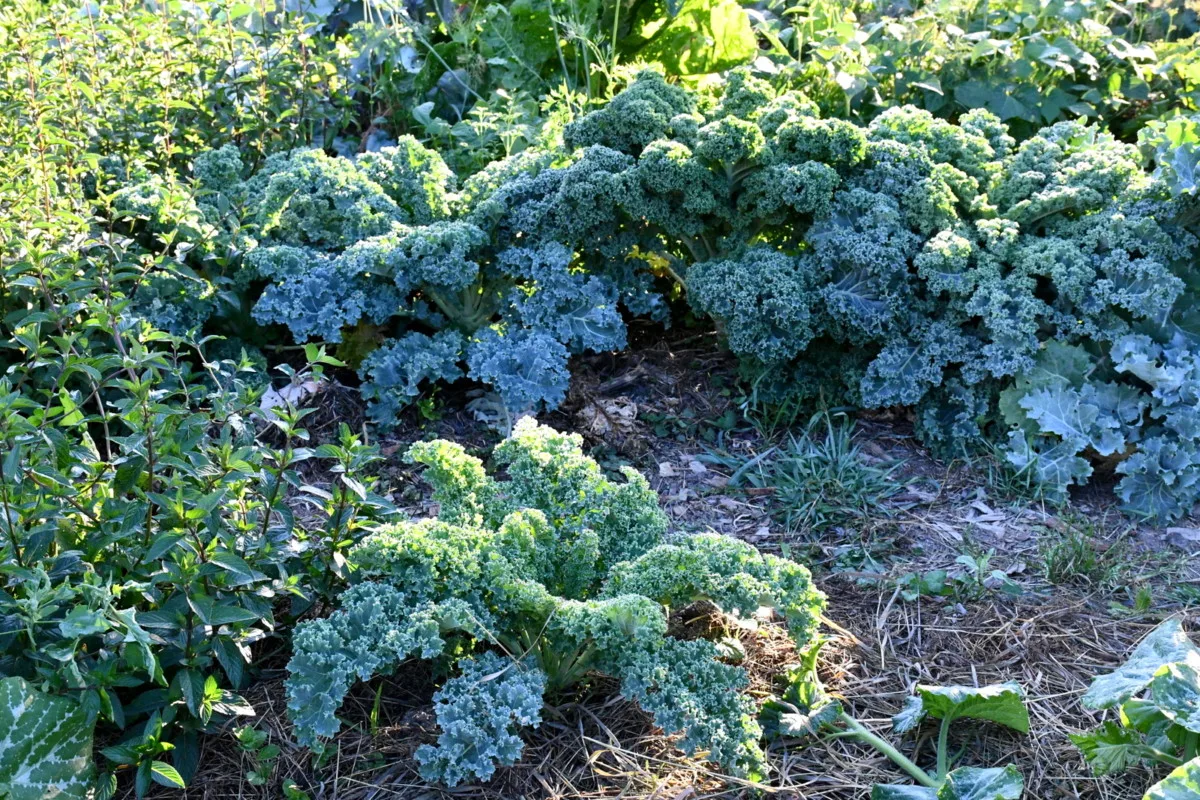
6. Minimal disruption to the soil – a small trowel (if you are planting transplants) or a stick (for sowing seeds) is all it takes to plant your garden.
You are happy; the soil is happy. What could possibly go wrong?
Check out these 12 Common Mistakes That No-Dig Gardeners Make so you can avoid some things that most beginners do wrong.
On a positive note…
You probably have all the tools you need (hands, sticks, trowel) to get started with no-dig gardening. Making the upfront cost, outside of mulch and compost, next to nothing.
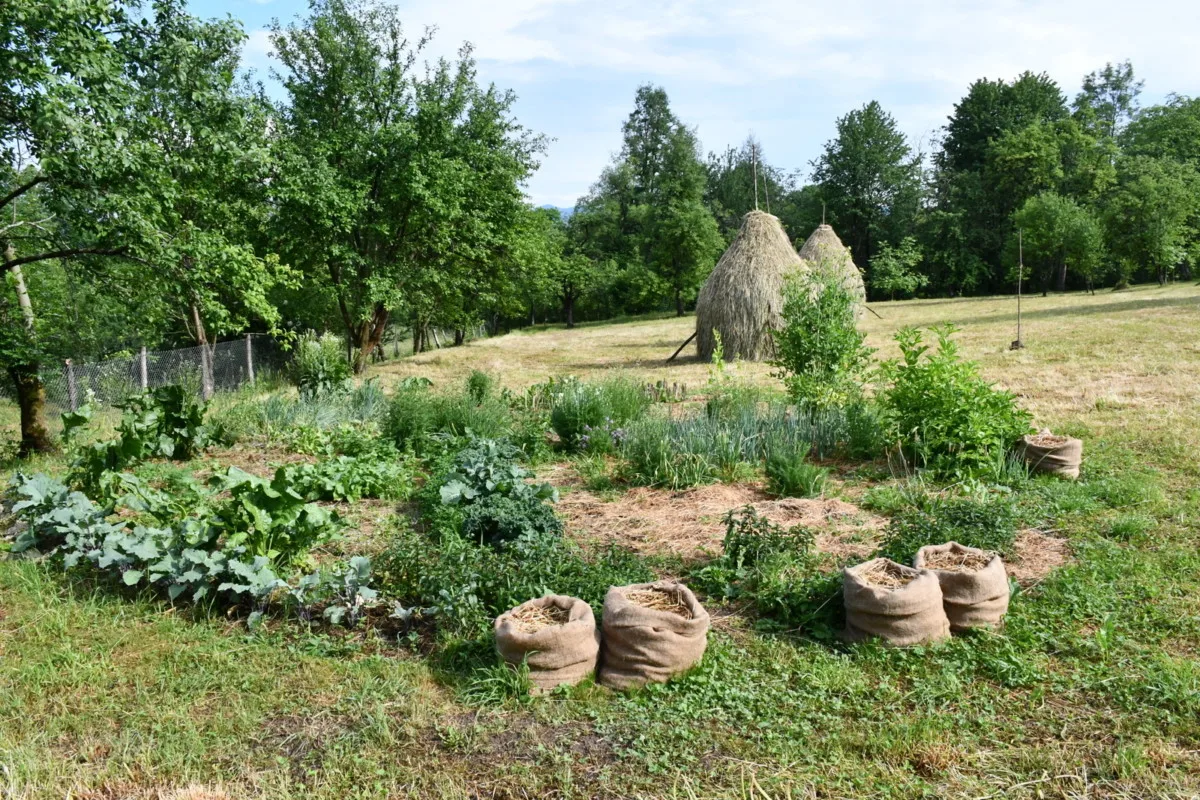
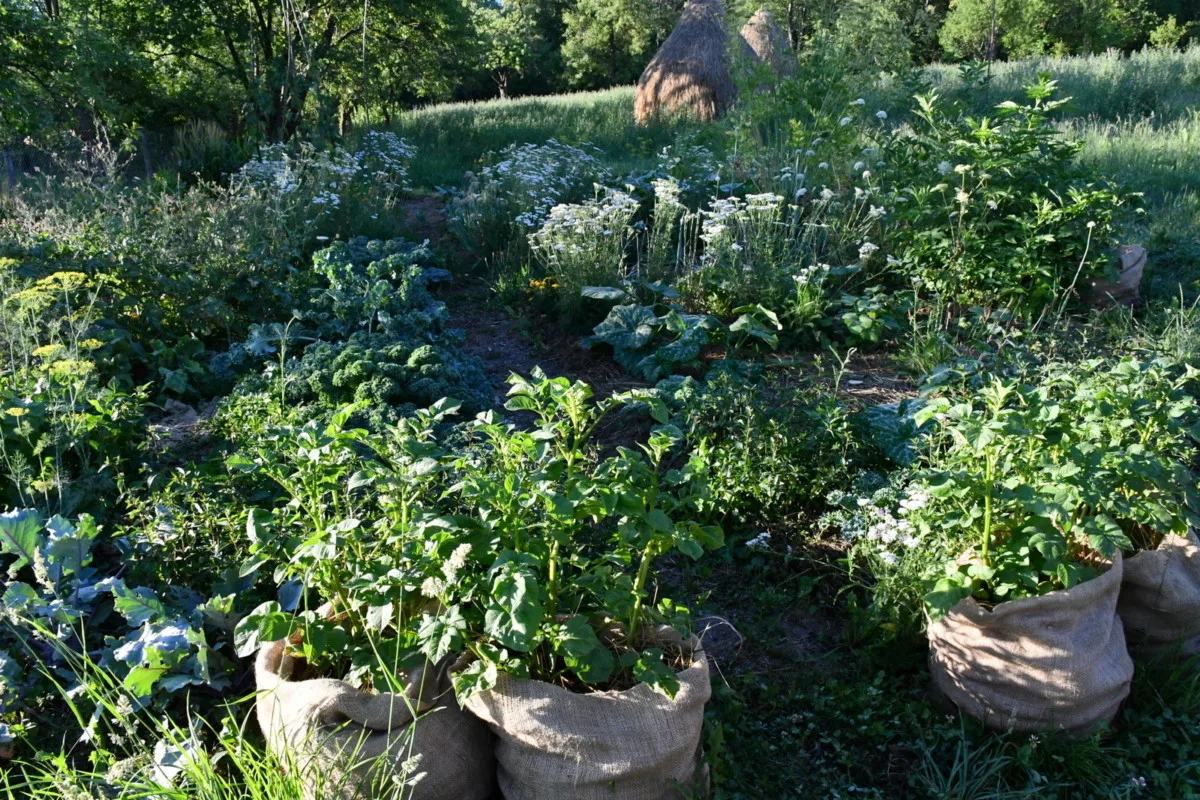
Here’s what you need to know to harvest a bushel of homegrown goodies from your no-dig garden.
1. No-dig gardening is easier than conventional gardening.
If you’ve ever turned a patch of heavy clay soil, whether it be dry or wet, you’ll know that digging is backbreaking work. Now imagine that patch is a garden-sized plot. How many hours would it take you to break the soil on a garden that measures 20 x 33 feet (6 x 10 meters)?
A whole lot more than laying down hay or straw, that’s for sure. The use of cardboard, newspaper or any other weed barrier is unnecessary in starting a no-dig garden.
But that’s just the beginning. When you dig your garden soil each year, the biodiversity decreases, yet the amount of hours you dig stays the same.
Once your no-dig garden becomes established, it gets easier and easier to manage. Often all you have to do is lay down another layer of mulch to keep the weeds at bay, creating more soil as you grow. It almost sounds too good to be true.
You have to understand that the key to all of this is mulch.
2. Mulching is essential.
What kind of mulch can you use in your no-dig garden?
Hay, straw, leaves, leaf mold, compost, well-rotted manure, seaweed and grass clippings come instantly to mind. If you have access to any or all of these, you are well on your way to having an amazing garden.
Some mulches have more benefits than others, but I’d like to add the most beneficial mulches are the ones that are readily available.
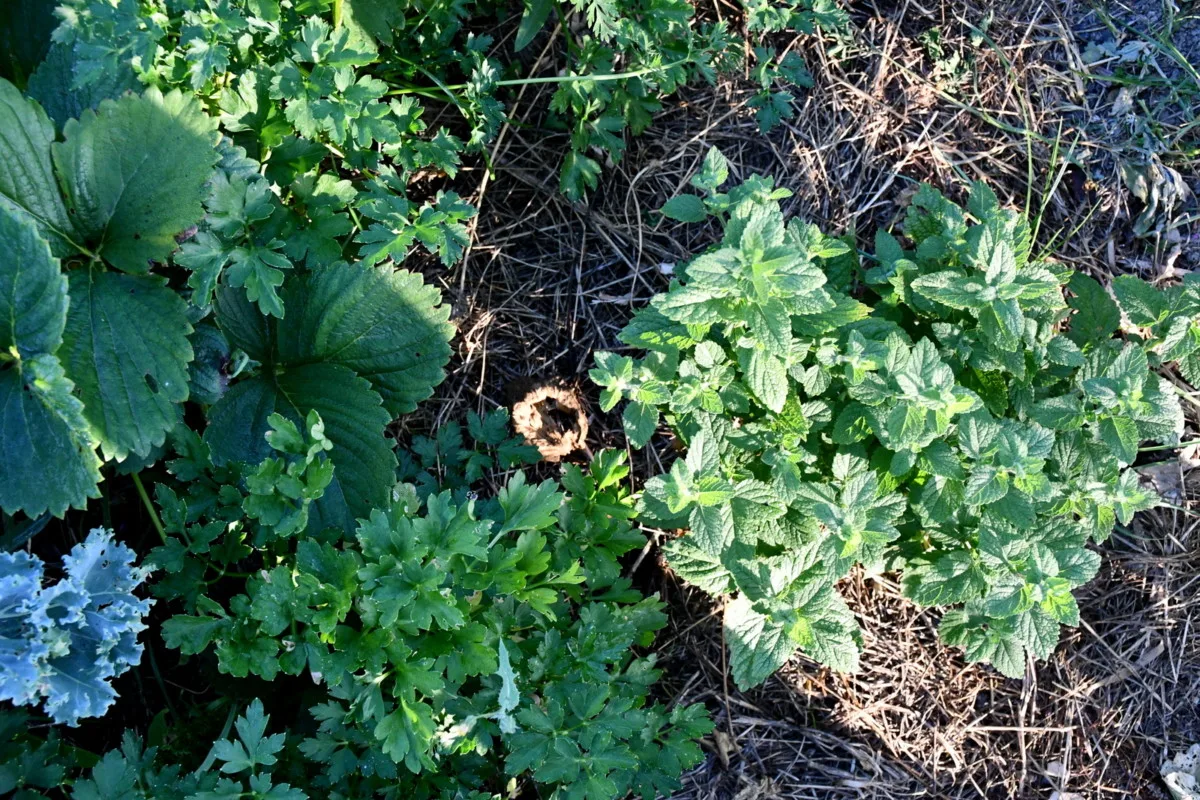
In our no-dig garden, hay is the most valuable, for that’s what the land produces here in the mountains. To bring in straw from far away would not only cost extra money for us, it may also bring some non-organic compounds into our organic garden. That’s something you really have to watch out for when using straw in your garden, especially if you are using straw bales to grow food.
Knowing when to mulch comes with experience in your own garden.
The know-how of when to mulch feels like a bit of a secret. No one really says anything concrete. So, let’s put this straight: you can mulch your no-dig garden at any time throughout the year.
We’ve experimented with loading the garden with an extra-generous layer of hay in winter (12-15″ of mulch) because we had material to use up. In springtime, it took forever for the soil to warm up, which delayed germination, plus it made planting difficult. Bottom line, don’t add too much mulch at once; it causes more harm than good.
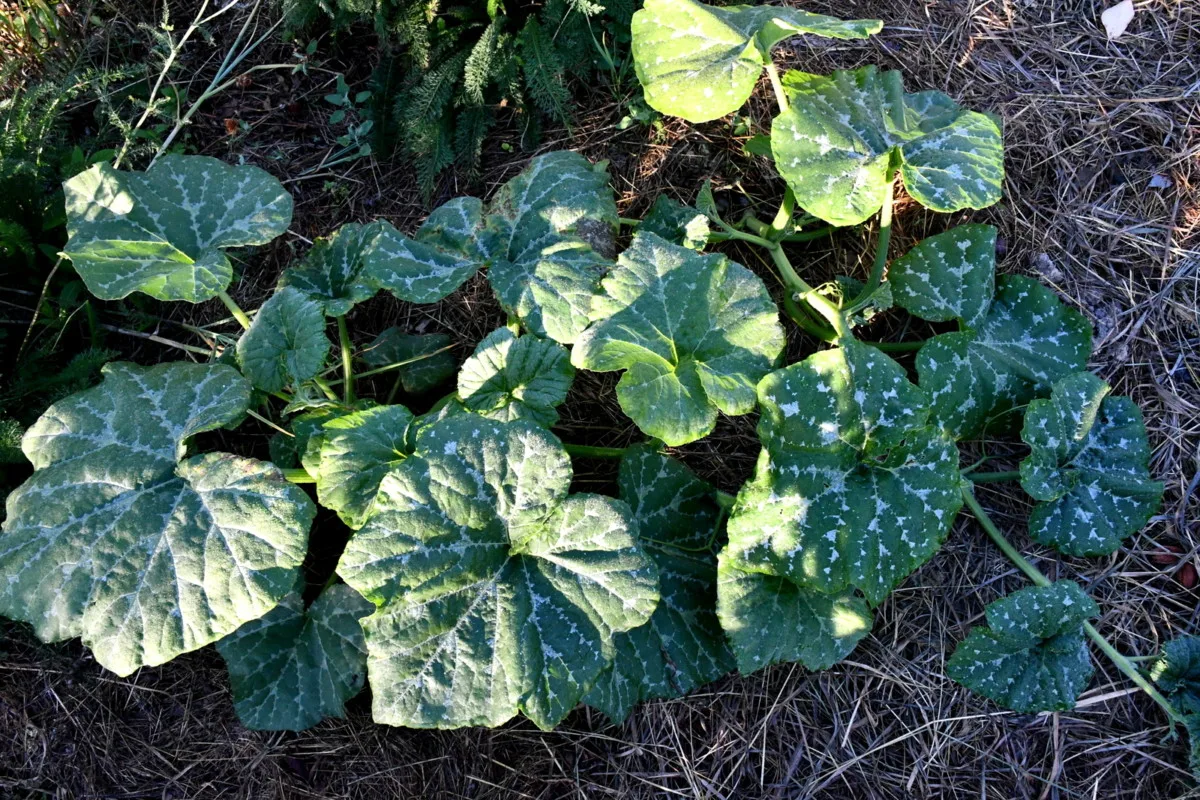
In the last couple of gardening seasons, we’ve modified our approach to mulching our no-dig garden.
Rather than apply mulch in late fall/early winter, we now leave the garden at the end of the season “as is”. In one way, this saves time and energy; after all, no additional work needs to be done. We’ve eliminated the need for manually shutting down the garden at the end of the season.
Instead, we let the soil and remaining mulch rest under the snow, waiting until about 2 weeks before planting time in spring. Then we go ahead and apply a certain amount of mulch, which depends on what is left covering the soil. No-dig gardening is not an exact science; there is plenty of room for trial and error, with a bounty of space for success.
A no-dig garden will always have areas that become barer, and sometimes the moles will push up and loosen the soil. For the former, simply apply more mulch; for the latter, flatten it, thank the moles for their work and continue gardening.
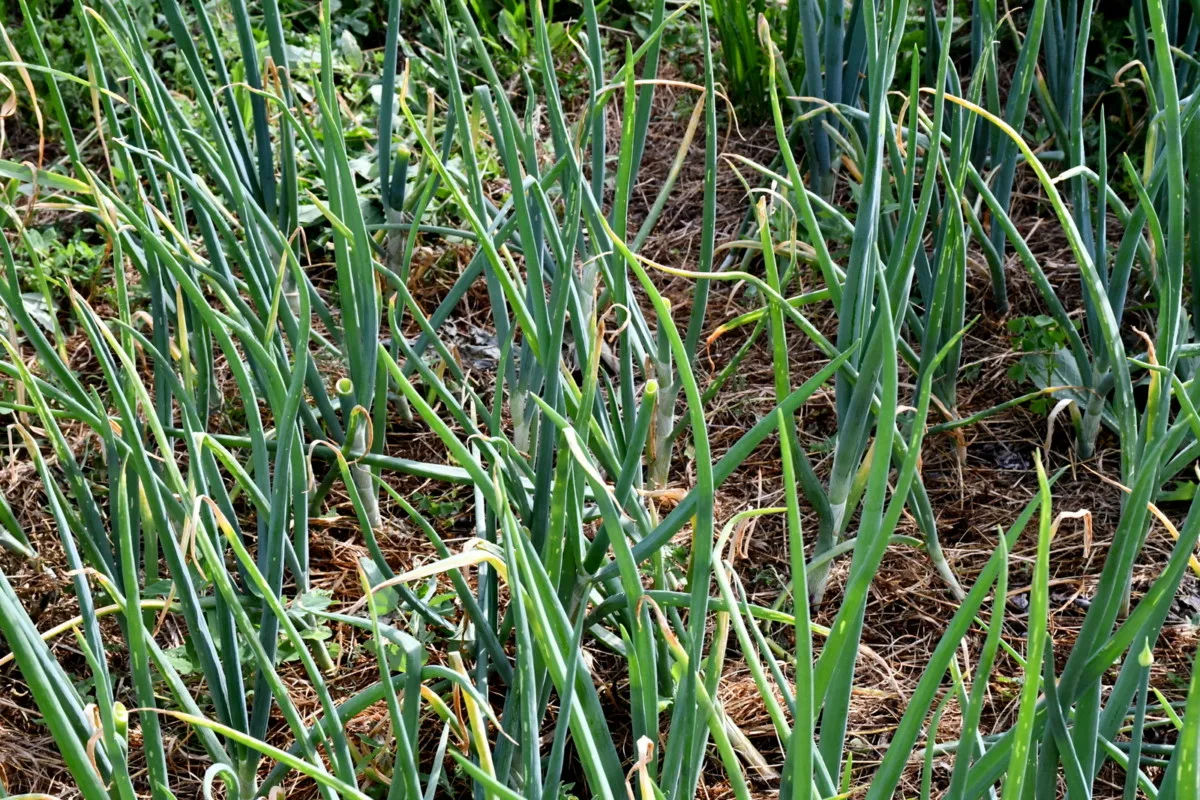
If throughout the season, you find that weeds are growing too dense in a certain area, then it’s time to add more mulch. Before your pumpkins and squashes overtake a territory, add more mulch to keep the weeds at bay before you can’t enter anymore.
3. Some vegetables grow better than others in a no-dig garden.
Over time, you’ll find that some veggies grow better than others in your no-dig garden. You’ll also notice that some grow well in a certain part of the garden and less so only five feet away. I suppose every garden is the same. A lot depends on the quality of your soil.
In the case of no-dig gardening, however, your soil should be automatically improving every year, with little input on your part. Like I said, no-dig gardening becomes easier and easier the longer you do it. In mid-summer you may only be spending a couple hours a week in the garden on light maintenance, pruning back plants, light weeding (mulch isn’t perfect) and watering during times of drought.
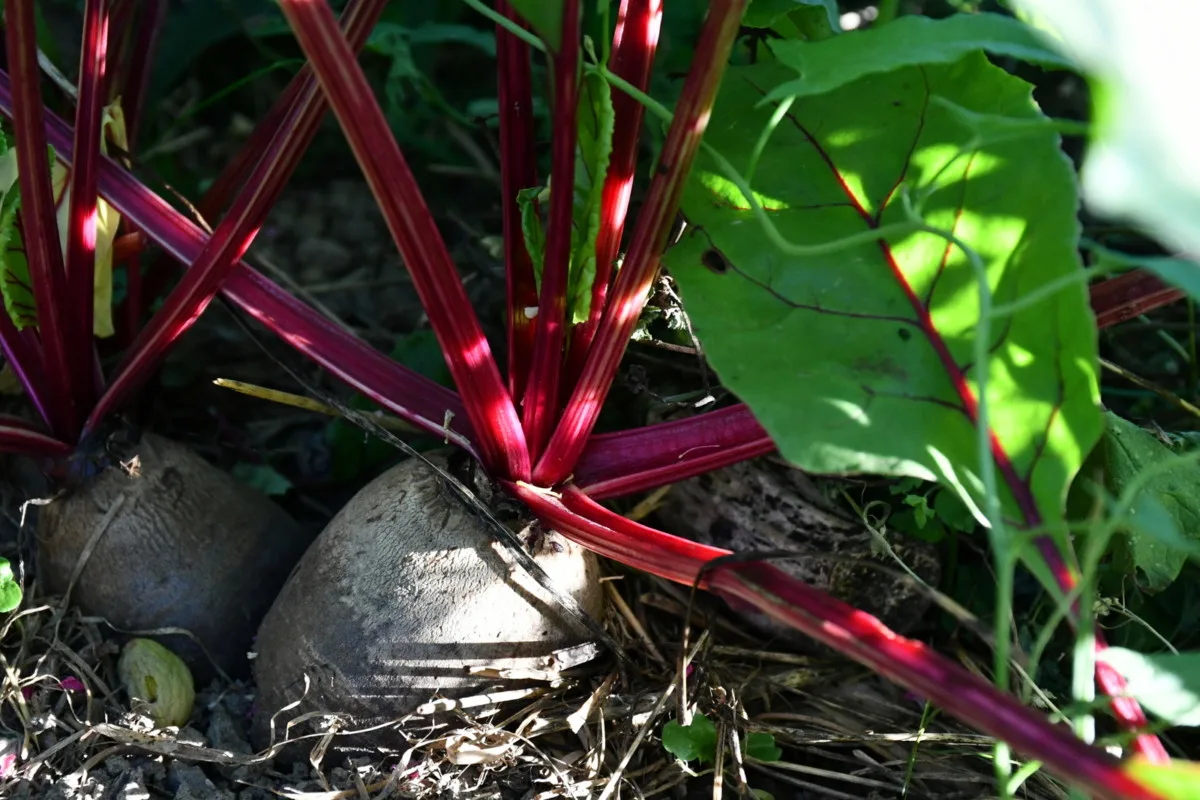
I’ve read before that parsnips, carrots, and other root vegetables grow beautifully in a no-dig garden, including in heavy clay soils. In our garden, this is simply not true. Those are the most difficult things to grow.
Veggies that grow best in our no-dig garden, in no particular order, are:
- winter squashes
- pumpkins
- zucchini – where doesn’t it like to grow?
- kohlrabi
- kale
- beans – bush and pole
- onions
- garlic
- chives
- herbs – mint, lemon balm, spearmint
- parsley, for the leaves
- beets
- calendula
- nasturtiums
- horseradish
- radishes
- broom sorghum
- rocket
- Swiss chard
- lovage
Tomatoes, under any other circumstances, will do well in most no-dig gardens; this is more a matter of climate.
Plus, we allow a plethora of “weeds” to grow in our garden, or as we like to consider them, “plants that attract pollinators”.
See the list under number 5: Weeds will come and go.
4. A no-dig garden allows for perennials.
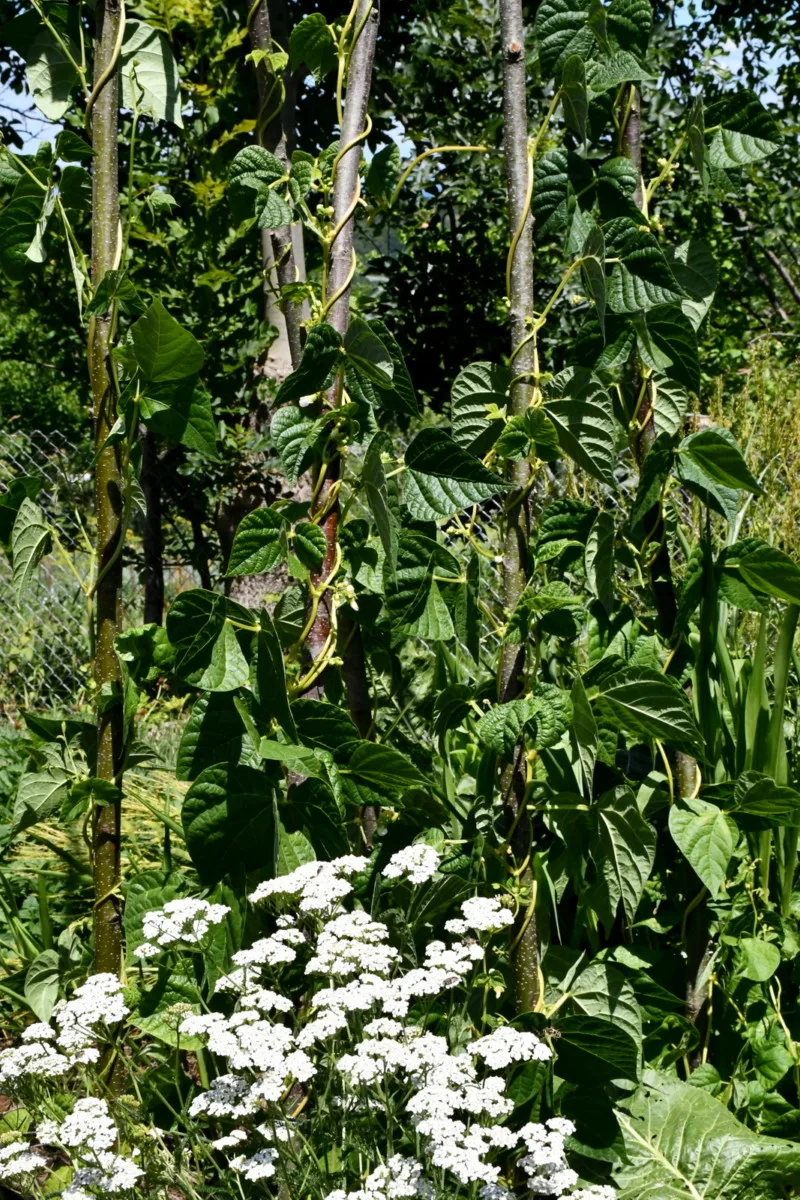
Now that you’ve stopped digging your garden, you can treat it as a plot of land that doesn’t need to be disturbed. This is fantastic news for perennials!
Garden-wise, this means you can have dedicated beds where annuals, biennials and perennials all share the same space. It provides a sort of permanence that gives your garden character all throughout the year.
Perennial plants come with so many benefits; here are a few:
- perennials extend your garden harvest – some, like rhubarb, are often the first plants to emerge from the ground.
- they are low-maintenance – once established, perennials require little care outside of pruning. They also happen to be reliable producers for several years, or decades, in a row, like asparagus, which is a perfect choice for your no-dig garden.
- perennials build the soil – when the leaves fall in autumn, it makes the perfect mulch, just as you are trying to emulate with not digging the soil.
- decoration and attraction – not only are perennials giving shape to the garden, even in the form of berry bushes or fruit trees, but they also act towards attracting beneficial insects of all kinds.
On the off chance that your annual crops fail, it’s always nice when a perennial offers you a crop in exchange for nothing.
5. Weeds will come and go.
You might be misled into thinking that weeds are non-existent in a no-dig garden. Weeds, I’m afraid, will always find a way in, either through the mulch, improperly composted compost, manure, or even the soil itself. Seeds of the weedy kind have managed to survive for so long because they can lay dormant for several years in the soil.
The best way to deal with this is to know your weeds. Find out what grows in your garden, then determine if they are edible weeds. If they are, there’s no reason they couldn’t co-exist with your garden veggies. In fact, the yarrow in our garden is host to more beneficial insects than one could count; considering the decline of insects worldwide, their native flowers are not something we are willing to take away from them.
If you consider your garden an ark, or a wildlife haven, leave as many wild plants for the bugs and the bees as possible. Many of them are edible or medicinal.
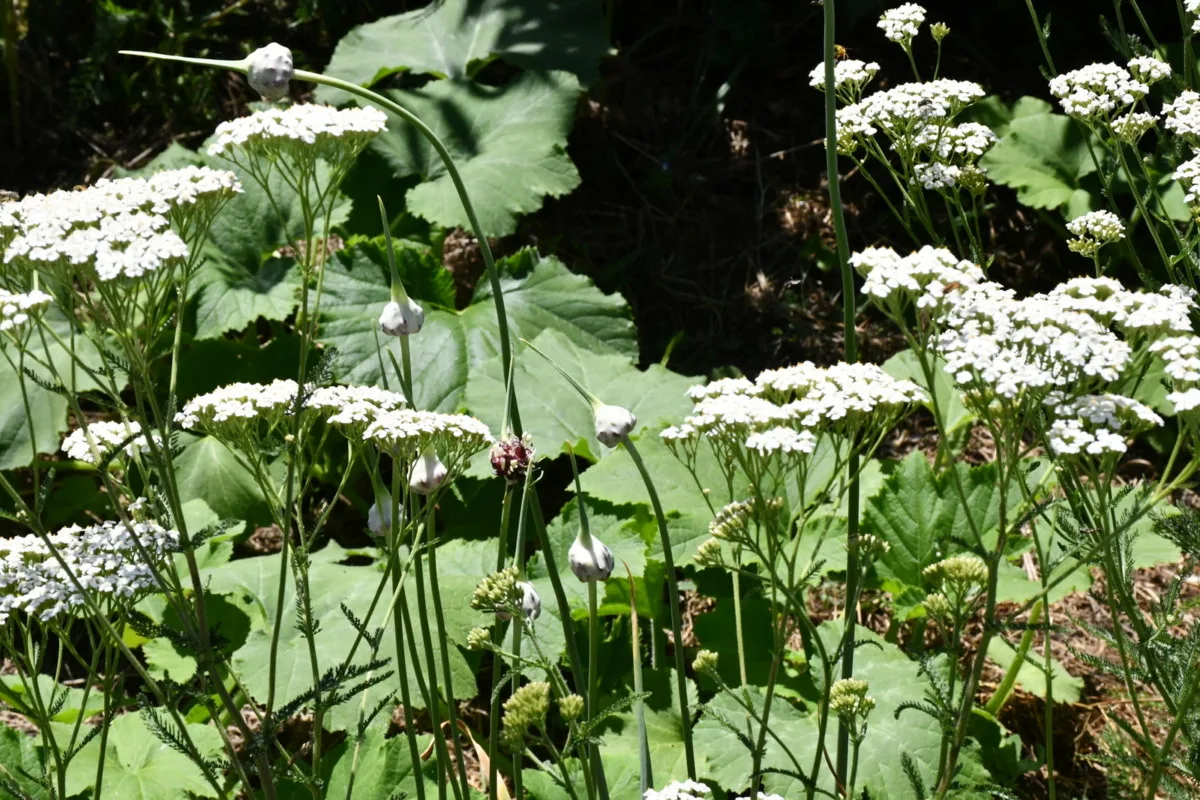
The predominant weeds we leave in patches in our no-dig garden:
- yarrow
- broadleaf and narrowleaf plantain
- goosefoot
- dandelion
- stinging nettles
- chickweed
- purple dead nettle
- wood sorrel
When you begin to recognize these perennial weeds as nutritious food for free, having weeds in your garden will take on a whole new meaning.
6. Don’t start too big.
Just because a no-dig garden sounds easy to manage, that doesn’t mean it doesn’t take any work at all. And the bigger the garden, the more likely you are to fail, especially when it feels overwhelming at once.
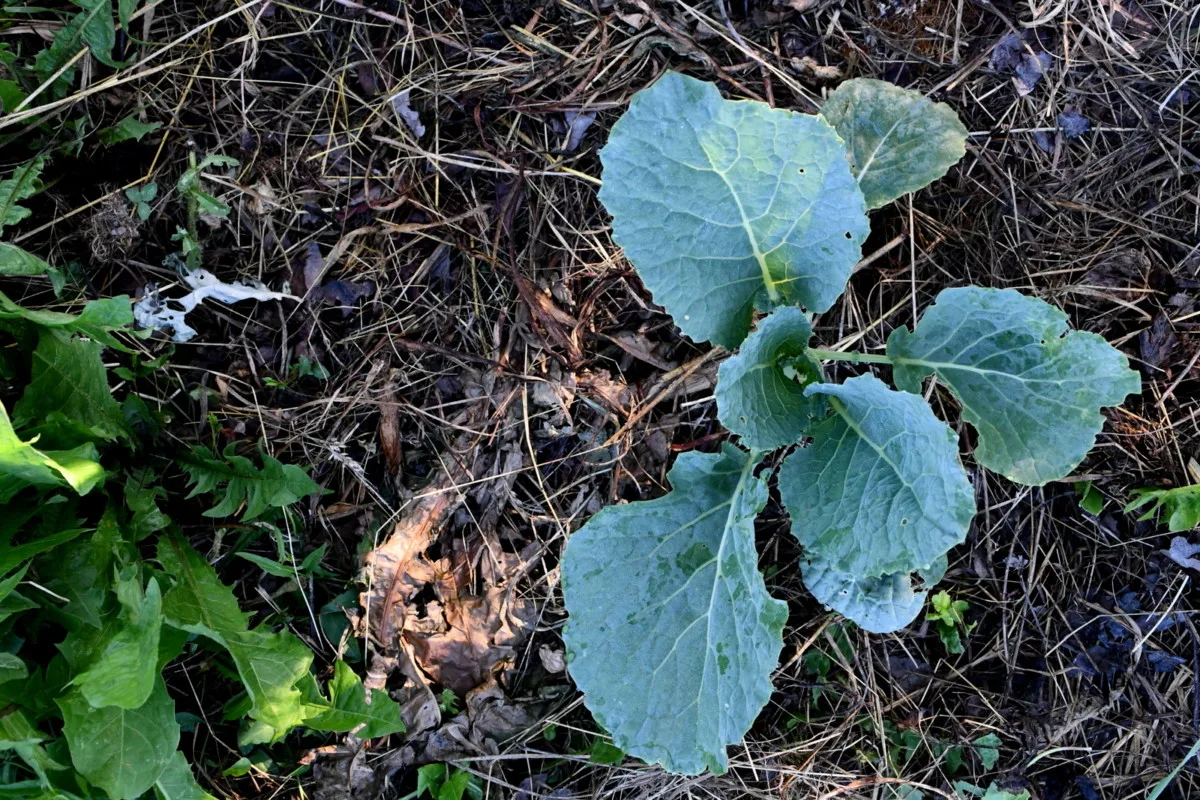
A no-dig garden can start out as any size, really. Lay down some mulch, pull it back to plant a zucchini seed, and there you have the tiniest yet most productive no-dig garden you can imagine. If you are really ambitious, it could fill half your backyard, particularly when you are in the pursuit of homegrown food.
To determine how big your garden should be, first think about the location, sunlight, slope, etc. Then think about how much food you’d like to try to grow on your own. It’s always better to start small, then expand each year until you are comfortable with what you know you can grow.
7. Watering your no-dig garden.
If your past gardening experience involves container gardening (which must be watered often), raised beds (a little less often than containers), or a conventional, tilled garden, then you are in for a real treat with your no-dig garden.
I’m not saying that a no-dig garden never benefits from irrigation; it does. The bigger problem here is with overwatering.
See, no-dig beds have plenty of moisture locked away in the soil, which means you don’t need to water as much as veggies planted in bare soil.
Naturally, you’ll still see squash leaves wilt in the high heat of the afternoon, but they’ll quickly recover by the next morning. The dew always helps.
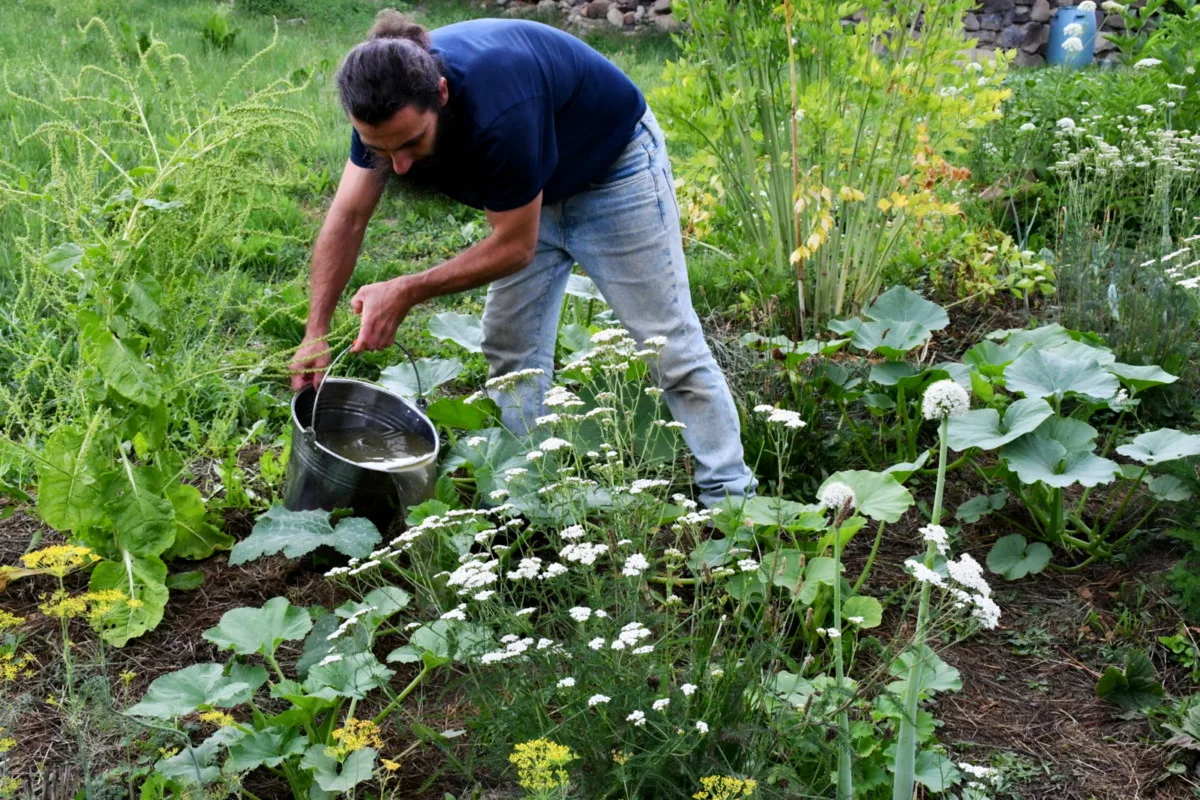
Now, are you ready to put down that spade and leave the soil intact?
Your back will thank you for it, nature will too.
Read Next:

Get the famous Rural Sprout newsletter delivered to your inbox.
Including Sunday musings from our editor, Tracey, as well as “What’s Up Wednesday” our roundup of what’s in season and new article updates and alerts.


